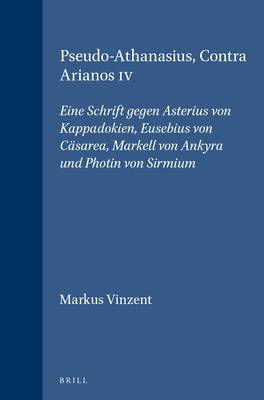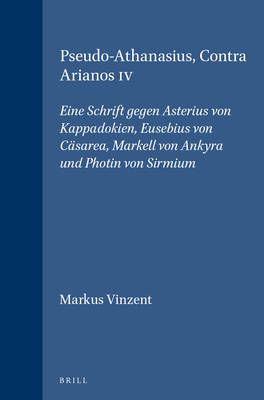
- Afhalen na 1 uur in een winkel met voorraad
- Gratis thuislevering in België vanaf € 30
- Ruim aanbod met 7 miljoen producten
- Afhalen na 1 uur in een winkel met voorraad
- Gratis thuislevering in België vanaf € 30
- Ruim aanbod met 7 miljoen producten
Pseudo-Athanasius, Contra Arianos IV
Eine Schrift Gegen Asterius Von Kappadokien, Eusebius Von Cäsarea, Markell Von Ankyra Und Photin Von Sirmium
Markus Vinzent
€ 589,45
+ 1178 punten
Omschrijving
Until now the period following the Council of Nicea has remained a dark age of early Christian history. This is partly due to the fact that Eusebius' last and important works, Contra Marcellum and De Ecclesiastica Theologia, have not sufficiently been studied. Comparatively little interest has also been given to the Pseudo-Athanasian text Contra Arianos IV.
Careful study and comparison of these works against the background of the post-Nicene debate between Asterius, Marcellus, Eusebius and Photinus, has revealed that (as A. Stegmann already proposed in 1917) Contra Arianos IV was written in about 340 and formed a Nicene critique of Marcellus, his pupil and opponents. Therefore, Stegmann's suggestion of the authorship of Apolinarius of Laodicea needs further investigation. This study on Contra Arianos IV sheds new light on the years between Nicea and the synods of Rome and Antioch (340/341).
Careful study and comparison of these works against the background of the post-Nicene debate between Asterius, Marcellus, Eusebius and Photinus, has revealed that (as A. Stegmann already proposed in 1917) Contra Arianos IV was written in about 340 and formed a Nicene critique of Marcellus, his pupil and opponents. Therefore, Stegmann's suggestion of the authorship of Apolinarius of Laodicea needs further investigation. This study on Contra Arianos IV sheds new light on the years between Nicea and the synods of Rome and Antioch (340/341).
Specificaties
Betrokkenen
- Auteur(s):
- Uitgeverij:
Inhoud
- Aantal bladzijden:
- 480
- Taal:
- Duits
- Reeks:
- Reeksnummer:
- nr. 36
Eigenschappen
- Productcode (EAN):
- 9789004106864
- Verschijningsdatum:
- 1/09/1996
- Uitvoering:
- Hardcover
- Formaat:
- Genaaid
- Afmetingen:
- 168 mm x 246 mm
- Gewicht:
- 952 g

Alleen bij Standaard Boekhandel
+ 1178 punten op je klantenkaart van Standaard Boekhandel
Beoordelingen
We publiceren alleen reviews die voldoen aan de voorwaarden voor reviews. Bekijk onze voorwaarden voor reviews.










